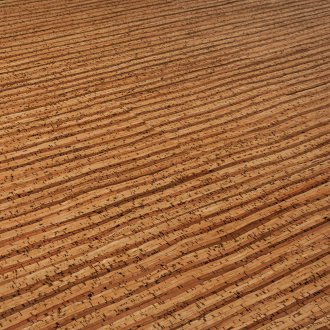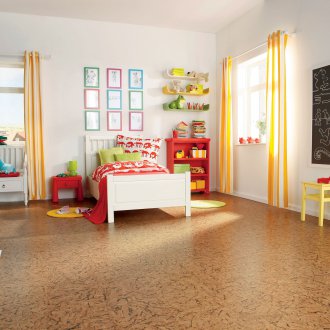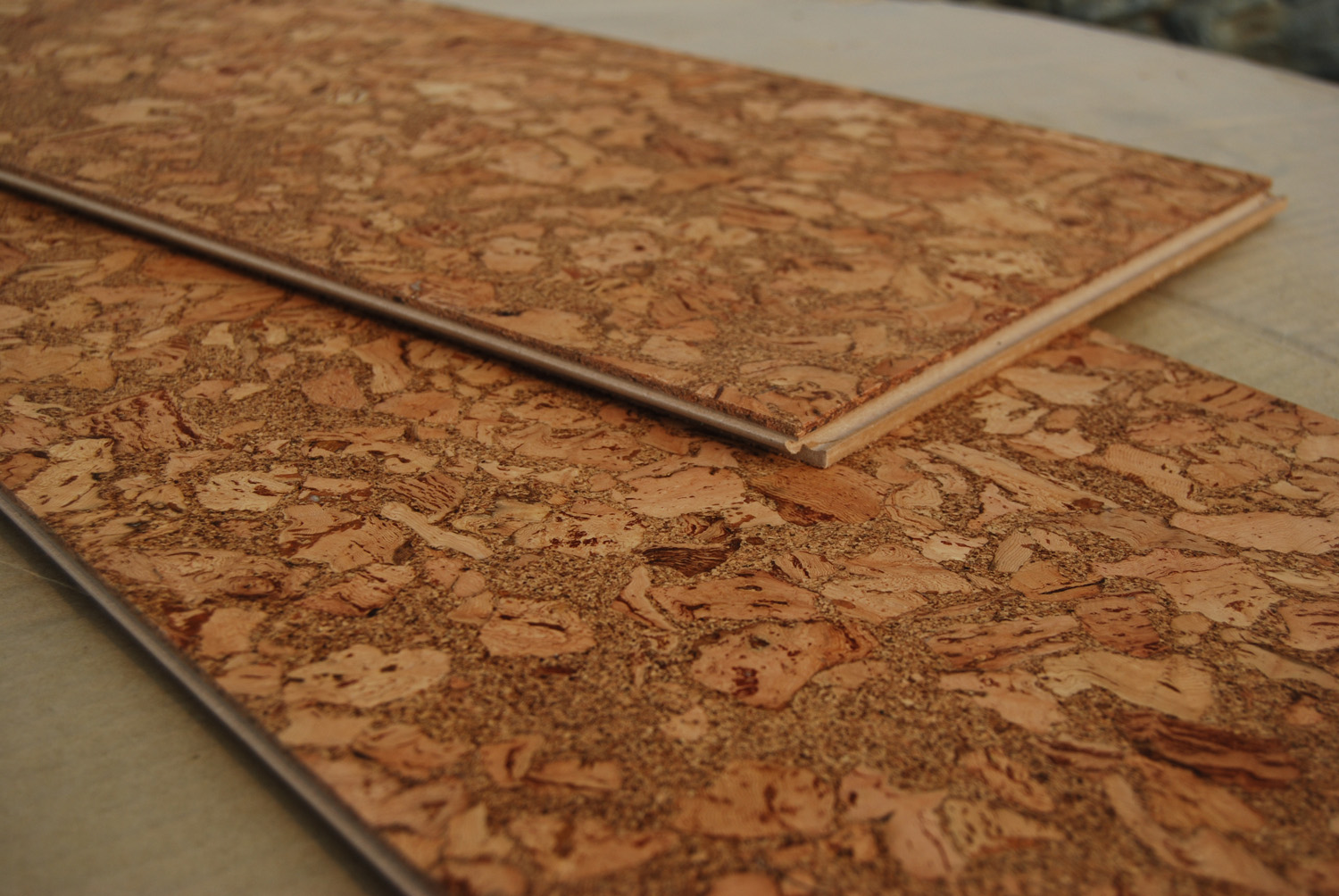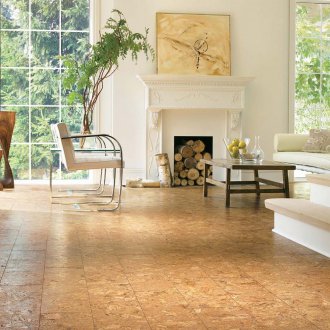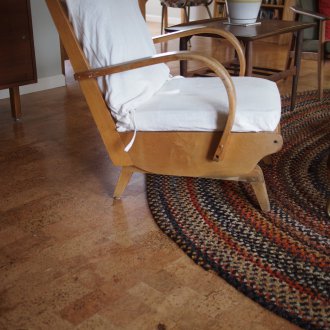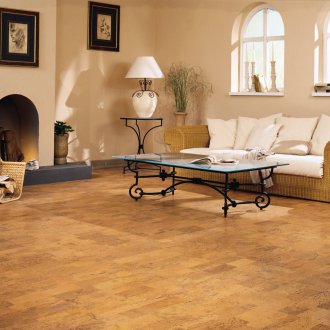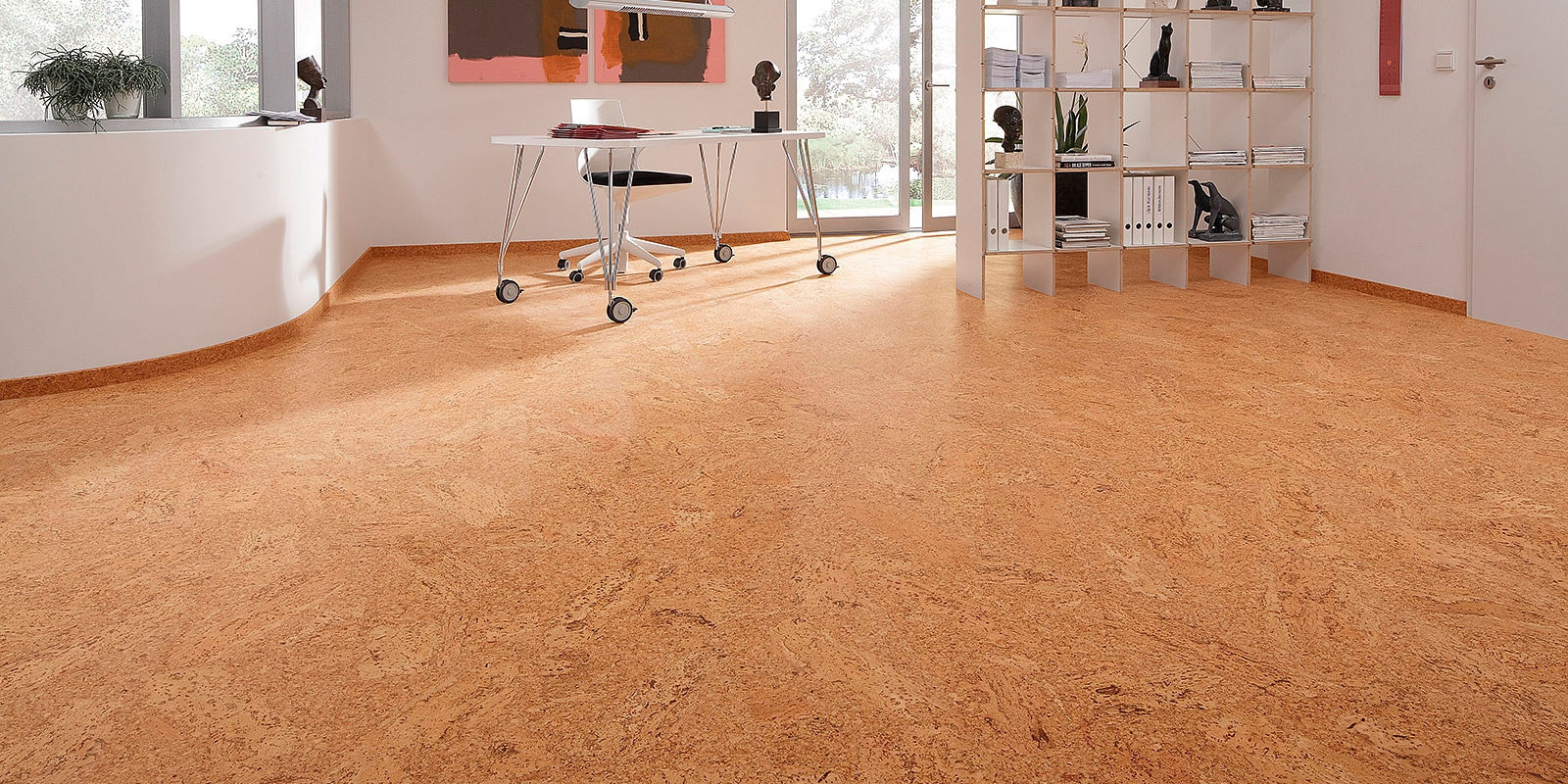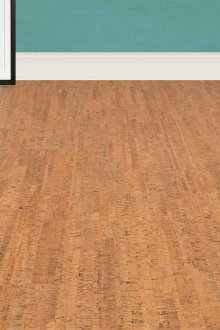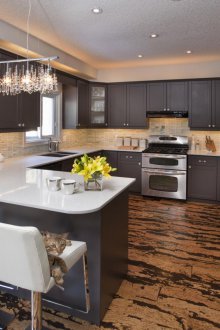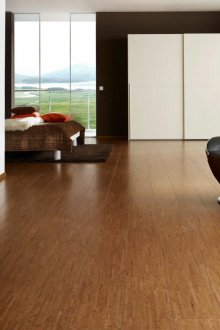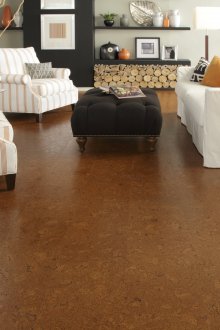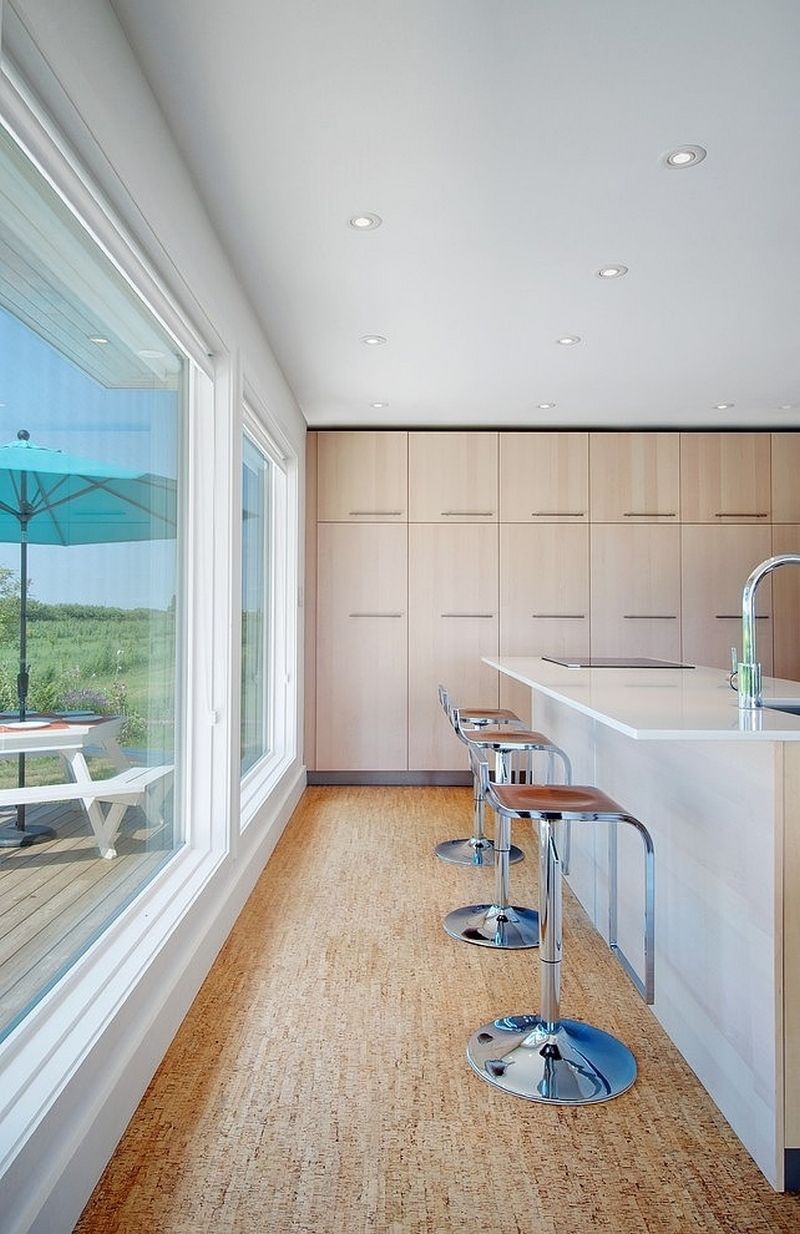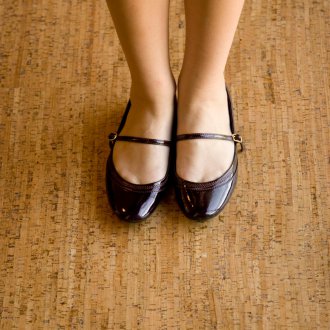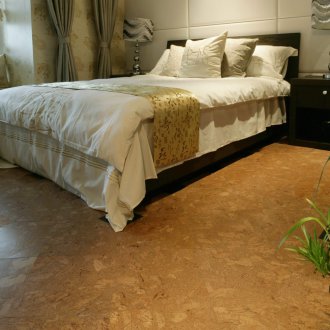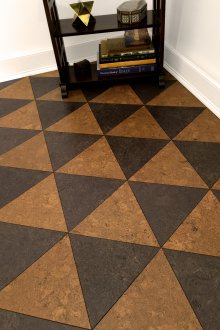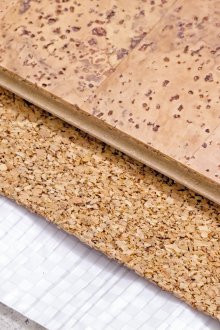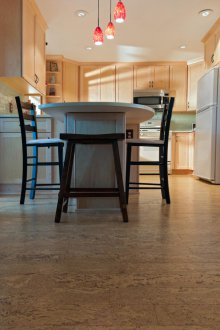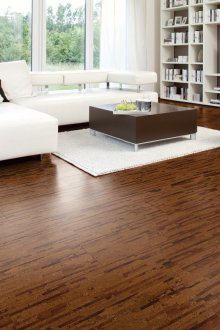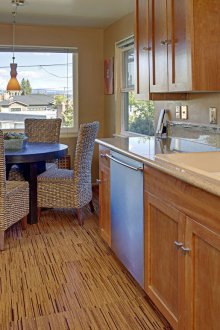Cork laminate in the interior: the possibility of flooring (23 photos)
Content
Cork flooring is no longer associated with some exotic in the interior. Since the material itself is quite expensive, therefore, manufacturers produce cork laminate, which differs little in appearance, but has a lot of advantages over other materials.
Material structure
The material is a combination of chipboard and cork. Typically, a coating consists of five layers, each of which has a specific purpose. The bottom layer is needed as a substrate. It consists of small crumbs and glue. Its functions include:
- noise absorption;
- surface leveling;
- warming.
The waterproof layer is made of a moisture-resistant plate from plywood or MDF. This is the toughest layer due to which the assembly of floor elements is carried out.
The third layer is usually a pressed cork connected by glue to a waterproof plate. It acts as an additional sound insulation and cushioning surface to repay the load when walking.
Above is a decorative layer of laminate, the manufacture of which uses veneer cork oak. Not only the decorative design of the floor depends on this layer, but also the durability of the material.
The top layer of varnish or vinyl coating protects the material from the external effects of detergents and walking people.
Thanks to such a complex structure, the maximum functionality of the coating is achieved.
Advantages and disadvantages of cork laminate
Cork laminate is considered resistant and durable, since the declared service life exceeds 30 years. However, in addition to the obvious advantages, there are many other useful properties:
- Environmental friendliness - natural components are absolutely safe for human health.
- Attractive appearance of the surface allows you to simulate valuable wood in the interior.
- Thermal conductivity. The material is ideal for cool rooms due to the ability to retain heat for a long time.
- Flexibility and elasticity. The coating is slightly springy, which reduces the risk of glass breaking. When small dents from objects appear over time, the surface is gradually leveled.
- Soundproofing allows you to provide noise reduction in an apartment building.
- Simple laying of cork laminate is available even for a beginner. The technology of assembly and installation corresponds to the standard scheme of working with a laminate.
- The moisture resistance of the material allows the use of the coating even in rooms with a high level of humidity.
- Unpretentious surface care.
Along with the advantages, there are also disadvantages of the material:
- Low degree of reliability of the laminating coating at point load.
- Increased abrasion during operation, due to which gaps and traces are formed.
- The high cost of coating in comparison with other types of laminate.
When purchasing a cork laminate, the pros and cons must be weighed in advance so that the money is not wasted.
Features of the assembly and installation of an unusual laminate
Before starting the design of the floor, you need to take care of the purchased coating. Building material must be unpacked and left indoors for several days.This will allow the coating to acclimatize. After such exposure, the cork will gain the necessary degree of humidity and temperature, which correspond to the climate of the room.
If you skip this stage of preparation and lay the material immediately, as a result, you may encounter problems with the appearance of cracks on the surfaces of the laminate.
Surface preparation
Before laying the cork floor, you should dismantle the old surface, remove the skirting boards, assess the presence of cracks or small roughnesses in the floor. If they are detected, immediately level the floor surface.
If, when assessing the condition of the floor, it turns out that the height differences exceed the norm of 2-3 mm per meter, it is necessary to make a screed. The easiest way is to use a self-leveling mixture.
After complete drying, you can spread the substrate joint to joint. Individual elements can be connected using tape. The substrate is laid in such a way that it not only covers the entire area, but also slightly captures the side surfaces.
Wooden floors can be aligned with plywood sheets. Then lay on them a cork-based laminate.
How to lay a coating
The cork is laid in a "floating way". Floor installation starts as standard:
- Laminated panels are stacked in rows. You need to start laying from the far corner of the room.
- To obtain a chess pattern during assembly, the seams of the panels are shifted by a third or half of one board.
- The assembly is quite simple: the spike of the next board is inserted into the groove of the installed panel. Then a little pressure is put on the board and lowered to a horizontal position. The lock is latched.
- To seal the joints of the panels on the end of the panel you need to lay a wooden block and hit it with a hammer several times.
Simple rules for laying panels will avoid errors and extend the life of the material.
When laying, you need to remember that over time, the cork laminate can expand, and therefore you need to leave the so-called compensation gaps between the coating and the walls, as well as between it and the obstacles (pipes, threshold).
All gaps left will be covered with skirting boards. The best option is a product made of the same material. However, both laminated and wooden skirting boards are allowed. To fix them enough, use mounting glue, screws, nails and dowels. You need to mount it on the walls so that between them and the floor there is a gap of 1 mm. This is necessary to ensure the mobility of the coating under loads.
Coating Care Features
Cork laminate - a coating that does not require a special approach during operation.
However, to increase the service life, it is enough to follow a few simple rules:
- Cleaning should be done using a vacuum cleaner or a slightly damp cloth.
- Do not use hard metal brushes or caustic cleaners.
- For such a coating, it is undesirable to select overall furniture with thin legs. If you do not plan to change furniture, you can put a small layer of felt or felt.
- In the winter, it is advisable to slightly moisten the floor to prevent it from drying out due to heating.
- If you get small contaminants that cannot be simply washed off, you can clean them with fine-grained emery paper. After that, you can polish the treatment place with special tools.
- Excessive wetting of the floor should not be allowed, since cork still refers to wooden materials, and therefore does not like excessive moisture.
- In the case of cuts or serious scratches, you can replace one plate, and not lift the entire floor in the room.
- Since the surface has a sufficiently shiny surface, do not rub it with special means. Their use can make the floor slippery, which can lead to injuries.
- Surfaces do not attract dust, therefore cleaning is quick and without the use of tools with hard surfaces.
- Simple cleaning will extend the life of the coating and prevent loss of appearance.
Cork flooring
Unique properties make cork laminate a universal option for all rooms and various interiors:
- For a bedroom, covering is convenient in that you can walk on it barefoot without fear of a cold.
- In a children's cover, the baby is protected from injuries during falls and allows playing directly on the floor.
- When laying the floor with a cork in the living room, you can create unique decorative combinations for a non-standard interior.
- In bathrooms, a moisture-resistant floor surface is always appropriate, so cork laminate will be quite appropriate.
- In the kitchen, made in ethnic style, you can not be afraid that stains of grease or dirt will spoil the appearance of the floor. The material does not absorb pungent odors, without which cooking is impossible, and therefore in the kitchen there will always be a fresh aroma of purity.
The variety of colors and high quality laminate flooring allow you to create unique interiors that will be appropriate in any room.
